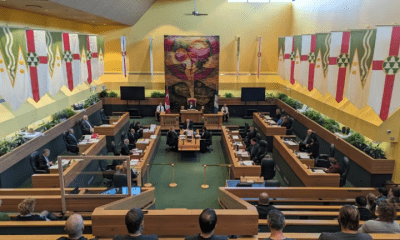Health
11K were diagnosed with HIV in 2017: DOH

Of last year’s 11,103 cases, 1,415 had developed full-blown acquired immune deficiency syndrome (AIDS), with 497 recorded deaths, according to the December 2017 HIV/AIDS Registry of the Philippines (HARP) prepared by the Department of Health’s Epidemiology Bureau. (PNA Photo)
MANILA —The number of Filipinos found to be human immunodeficiency virus (HIV) – positive jumped from 9,264 in 2016 to 11,103 last year, with the daily average likewise rising from 26 to 31 over the period.
Of last year’s 11,103 cases, 1,415 had developed full-blown acquired immune deficiency syndrome (AIDS), with 497 recorded deaths, according to the December 2017 HIV/AIDS Registry of the Philippines (HARP) prepared by the Department of Health’s Epidemiology Bureau.
Of the figure, 10,586 were male, 5,581 were aged 25-34 years, and 3,451 belonged to the 15-24 years age bracket.
In December alone, 992 cases were recorded, 138 of which had progressed into full-blown AIDS, resulting in 69 deaths, according to the report.
Some 97 percent were male with a median age of 27 years. Half were in the 25-34 age group and 33 percent were 15 -24 years old.
The most common mode of transmission remained to be sexual contact, with 962 cases, 87 percent of which were males having sex with males (MSM).
The National Capital Region (NCR) topped the other regions with 351 cases; followed by Calabarzon with 147; Central Luzon (106); Central Visayas (74); Western Visayas (66); and Davao (41).
The HARP further said that since January 1984, when HIV/AIDS was first reported in the Philippines, a total of 50,725 Filipinos had been diagnosed with the disease and 2,466 had died of AIDS.
In the early years of the epidemic, from 1984 to 1990, 62 percent were female. However, from 1991 to the present, 94 percent consist of males. There has been a shift in the number of patients in terms of age – between 2001 and 2005, most patients were 35-49 years old, but starting 2006, most were 25-34 years old.
The proportion of HIV-positive cases in the 15-24 age group likewise increased from 25 percent in 2006-2010 to 29 percent in 2011-2017, stated the report.
From January 1984 to December 2017, 83 percent of the patients contracted the virus through homosexual contact, 12 percent through heterosexual contact, and 4 percent through sharing of infected needles. More than half of the cases among MSM belonged to the 25-34 age group, while 30 percent were in the 15-24 age bracket.
“From 1984-2006, the predominant mode of transmission was male-female sex. Beginning 2007, the trend spiked to male-male sex as the predominant mode of transmission and has continually increased since then,” the HARP said. “In the past five years, from January 2012 to December 2017, 82 percent (34,794) out of the total (42,361) newly diagnosed cases were among MSM.”
From January 1984 to last December, 2,466 deaths were reported, 89 percent of them were male, 49 percent were aged 25-34 years, and 15 percent were aged 15 to 24 years.
According to the report, 24,754 people living with HIV are on Anti-Retroviral Therapy (ART) as of December 2017. (PNA)





















